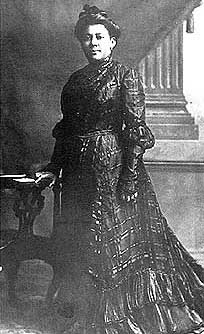Mary Burnett Talbert, clubwoman and civil rights leader, was born on September 18, 1866, to Cornelius and Caroline Nicholls Burnett in Oberlin, Ohio. Mary Burnett graduated from Oberlin High School at the age of sixteen and in 1886 graduated from Oberlin College with a literary degree at nineteen. Shortly afterwards, Burnett accepted a teaching position at Bethel University in Little Rock, Arkansas and quickly rose in the segregated educational bureaucracy of the city. In 1887, after only a year at Bethel University, Burnett became the first African American woman to be selected assistant principal of Little Rock High School. Four years later, Burnett married William H. Talbert, an affluent business man from Buffalo, New York. She resigned her position at Little Rock High School and moved to her husband’s hometown. One year later, Mary and William Talbert gave birth to their only child, Sarah May Talbert.
Over the next thirty years, Mary Talbert established herself as an accomplished public and civic leader in Buffalo. In 1899, she became one of the founding members of the Phyllis Wheatley Club of Colored Women, Buffalo’s first affiliate of the National Association of Colored Women (NACW). In 1905, Talbert secretly hosted black political activists including W.E.B DuBois, John Hope, and nearly thirty others around her dining room table for the first meeting of what would eventually become the Niagara Movement, a forerunner to the National Association of Advancement for Colored People (NAACP). Talbert became one of the first women to join the NAACP after its founding in 1909. In 1916, Talbert was elected president of the National Association of Colored Women (NACW) and the vice president of the NAACP. In 1917, Talbert became one of a handful of black Red Cross nurses to serve on the Western Front in Europe after the United States entered World War I.
After the war, Talbert returned to Europe to lecture on the importance of women’s rights and race relations. She also became a dedicated advocate of the Dyer Anti–Lynching Bill, introduced in 1919 by Missouri congressman Leonidas Dyer. In 1921, she became chair of the NAACP’s Anti–Lynching Committee. The next year, Mary B. Talbert became the first African American woman to win the NAACP’s Spingarn Award, the organization’s most significant honor for civil rights activity. Mary Burnett Talbert died in Buffalo, New York on October 15, 1923, at the age of 57.

